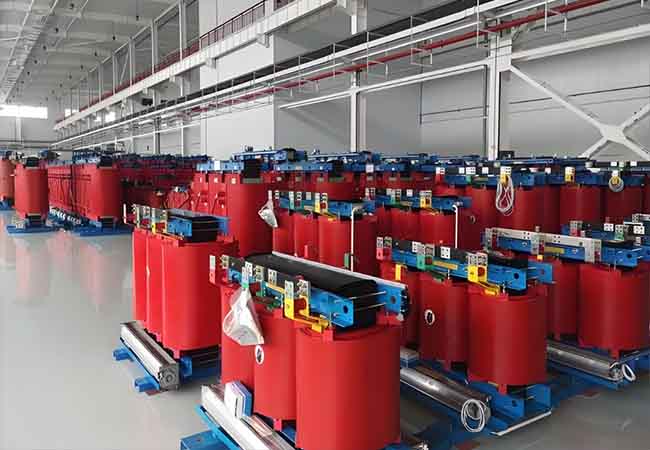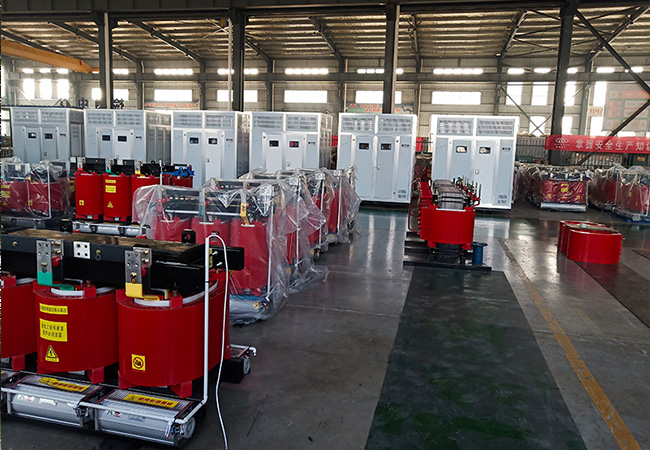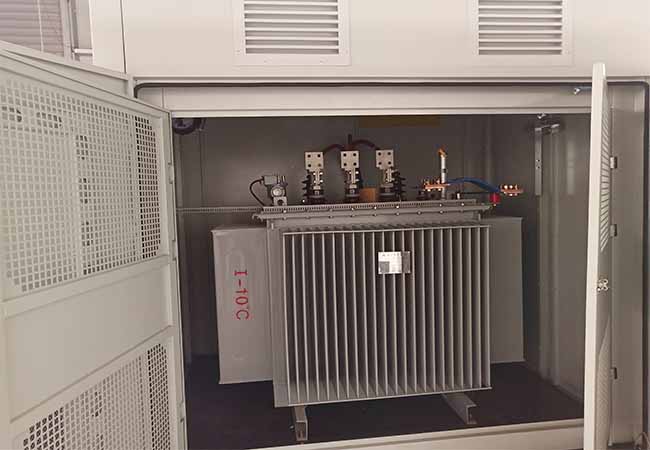Dry-type Transformer Classification characteristics
04-08 2025 | By:
Classification and Characteristics of Dry-Type Transformers
Dry-type transformers, known for their non-flammable and environmentally friendly design, are widely used in industries such as power distribution, buildings, and transportation. This article systematically categorizes dry-type transformers and analyzes their structural and performance characteristics based on insulation materials, cooling methods, and application scenarios.

1. Classification of Dry-Type Transformers
(1) Cast Resin Type (Epoxy Resin Encapsulated)
Structure: Windings are encapsulated with epoxy resin, often reinforced with materials like glass fiber or quartz sand to enhance mechanical strength and heat dissipation.
Characteristics:
High resistance to moisture, dust, and chemical corrosion.
Excellent fire safety (self-extinguishing properties).
Suitable for indoor environments with strict fire safety requirements, such as hospitals and data centers.
Subtypes include thick-layer (with fillers like quartz) and thin-layer (pure resin) encapsulation.
(2) Open-Wound Type (Non-Encapsulated)
Structure: Windings are exposed or coated with varnish, relying on air circulation for cooling.
Characteristics:
Lower manufacturing cost and simpler maintenance.
Requires clean, dry environments (e.g., industrial plants).
Vulnerable to humidity and contaminants, necessitating regular inspections.
(3) Gas-Insulated Type (SF6)
Structure: Uses sulfur hexafluoride (SF6) gas as insulation and coolant within a sealed enclosure.
Characteristics:
High voltage capacity (up to 500 kV) and compact design.
Suitable for harsh environments like mines or outdoor substations.
Environmental concerns due to SF6’s greenhouse effect and potential toxicity.
(4) Vacuum Pressure Impregnated (VPI)
Structure: Windings are impregnated with resin under vacuum to eliminate air gaps.
Characteristics:
Enhanced thermal stability and partial discharge resistance.
Commonly used in H-class insulation systems for high-temperature applications.
(5) NOMEX Paper-Insulated Type
Structure: Utilizes NOMEX® (aromatic polyamide) paper for insulation, combined with high-temperature varnish.
Characteristics:
C-class insulation (220°C continuous operation).
Recyclable and resistant to fire, moisture, and chemical degradation.
Ideal for renewable energy systems and marine applications.

2. Key Characteristics of Dry-Type Transformers
(1) Thermal Performance
Natural air cooling (AN) allows continuous operation at rated capacity. Forced air cooling (AF) boosts capacity by 50% for short-term overloads.
Advanced temperature control systems monitor winding temperatures via PT100 sensors, triggering alarms or shutdowns to prevent insulation failure.
(2) Environmental Adaptability
IP Protection: IP23 enclosures protect against dust and water ingress, making them suitable for outdoor or polluted environments.
Noise levels as low as 50 dB (for <2,500 kVA units), compliant with urban noise regulations.
(3) Energy Efficiency
Low no-load and load losses (e.g., SCB10 series reduces losses by 25% compared to traditional models).
Non-flammable design eliminates fire risks associated with oil-based transformers.
(4) Mechanical Strength
Epoxy resin or NOMEX insulation provides high resistance to short-circuit forces.
Modular designs integrate cooling fans, temperature sensors, and smart interfaces for remote monitoring.
3. Application Scenarios
Urban Infrastructure: High-rise buildings, subways, and airports (cast resin or NOMEX types).
Industrial Zones: Chemical plants and mining facilities (gas-insulated or IP23-protected units).
Renewable Energy: Wind farms and solar plants (NOMEX or VPI types for high-temperature resilience).
Conclusion
Dry-type transformers offer diversified solutions tailored to specific operational needs. Cast resin and NOMEX types dominate modern applications due to their safety and durability, while SF6 and open-wound units cater to niche environments. Future trends focus on enhancing energy efficiency (e.g., amorphous cores), smart monitoring, and eco-friendly materials to align with global sustainability goals.
You may also find these interesting:


